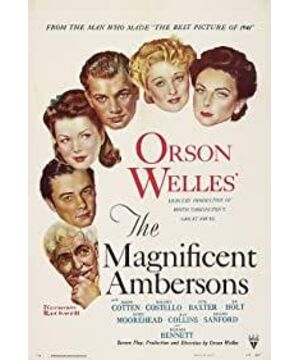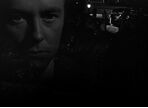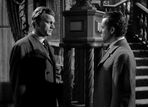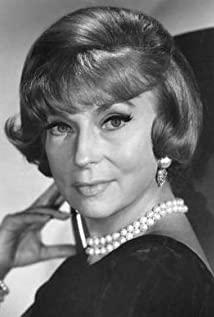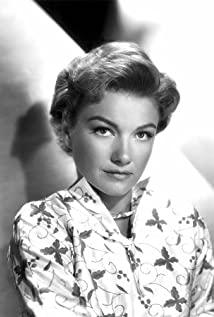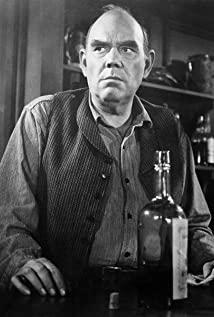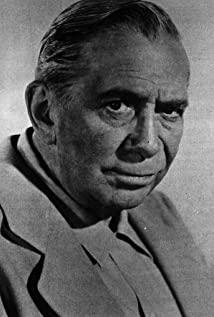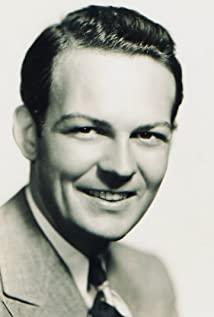What is The Magnificent Ambersons about?
The Magnificent Ambersons is about the proud and celebrated Amberson family. The story shows how the family refuses to change with the times, and the subsequent deterioration of the Amberson name as a result.
The story is set in Indianapolis in the late 1800's/early 1900's, and shows how the beauty of a small town was slowly destroyed by the advent of the automobile. A number of dramas carry the movie along. Isabel Amberson is the town beauty and is courted by various beaus, one of whom is the brash and handsome Eugene Morgan. Eugene plans an elaborate serenade for Isabel in front of the Amberson mansion, but makes a fool of himself by falling on his bass viol in a drunken stupor. Eugene tries repeatedly to win Isabel, but she refuses. Even though she is in love with Eugene, the embarrassment from this one incident and the social customs of the time prohibit her from having anything to do with him. Isabel eventually marries Wilbur Minafer, who is less flashy than Eugene, but respectable. Isabel isn't in love with Wilbur, however,and their one child George is incredibly spoiled by Isabel and grows up to be extremely arrogant, righteous and self-absorbed. George has an air of entitlement because he is an Amberson, and has no use for anyone who wants to work for a living. This includes Isabel's true love, Eugene, who left town after losing Isabel. Eugene returns twenty years later with his daughter Lucy, having made his fortune by developing one of the first automobiles. After Wilbur's death, Eugene pursues Isabel again. Wilbur's sister Fanny is also in love with Eugene, though this is not returned by Eugene. Even though Isabel and Eugene are both still in love, their plans are thwarted by George. George hates Eugene not just because of his profession, but because he has to share his mother's attention for the first time.When George learns that the townspeople are talking about Eugene's love for Isabel, George becomes enraged by this supposed scandal and does whatever he can to prevent Isabel and Eugene from marrying. George and Isabel leave on a trip around the world and are gone for five years . Despite Isabel's poor health and longing for Eugene, George insists that they both stay abroad, returning only when Isabel is colse to death. George's attitudes and actions help to ruin his family, as well as his chances of having a relationship with Eugene's daughter Lucy . Eventually George receives his "comeuppance", learning humility after suffering the tragic consequences of his own devices. George reconciles with Lucy, and asks for Eugene's forgiveness. By then all of the members of the Amberson family have either died,moved away or become destitute.
Is this movie based on a book?
Yes. The book The Magnificent Ambersons was written by Booth Tarkington, for which he received the Pulitzer Prize in 1919.
When was this movie made and who directed it?
The movie was released in July 1942 and was directed by Orson Welles. It was his next project after right after Citizen Kane.
I've heard of Citizen Kane, but not The Magnificent Ambersons. Why?
The Magnificent Ambersons was supposed to be as big as if not bigger than Citizen Kane, but many events contributed to this classic becoming an obscure Hollywood memory (see next FAQ). The short explanation is that Ambersons is an artistic film that was not well received by mainstream audiences when it was released, and it just never caught on the same way that other classics do.
What happened to this movie to make it such a tragic piece of Hollywood history?
In its original form Ambersons was 131 minutes long, and was very upbeat for about 45 minutes, after which it took a sudden dramatic turn to become a very sad story without an uplifting ending. Once most of Ambersons was finished, Welles left for Brazil by request of the US State Department to make another film, which was intended to foster relations between the the US and South America (the film was never finished, but would later be released as "It's All True"). The final process of editing was left to the film's editor Robert Wise. There are conflicting reports of what happened next, but a number of scenes were cut, ordered either by RKO or by Welles himself. Either way, the shortened version was previewed at a theater in Pomona, CA, so that audience reaction could be used to make changes if necessary.
The Pomona preview was a disaster. Before Ambersons played, the audience had watched the rousing musical The Fleet's In, so the audience was probably not in the mood for a slow-paced and depressing period piece. Audience members (consisting mostly of teenagers) talked at the picture, kidded it, and laughed at the wrong places. After the film, audience members filled out "comment cards" to express their opinions. While some of the responses praised the film, most of the cards were very negative, with comments like "it stinks", "rubbish", and "a horrible distorted dream". The president of RKO, George Schaefer, was at the preview and wrote to Welles "Never in all my experience in the industry have I taken so much punishment or suffered as I did at the Pomona preview".
At this point RKO had invested over $1,000,000 in a picture that could possibly bomb. The next action was to make more changes and preview it again. Again, there are two different versions of what happened - either some of the original cuts were put back in , or more cuts were made. Either way, another preview was held two days later in Pasadena. This preview was much more favourable, although both audiences had problems with some of the same aspects. The film at this point, while shorter (about 117 minutes), was still relatively intact. Rather than leaving the film alone, however, RKO believed that Ambersons would only appeal to a more mature audience, which was how Pasadena was perceived. Because the largest part of movie revenue would came from the younger crowd ,Substantial changes would have to be made to make the film shorter and more upbeat. Ideally, Welles would have to be present during this editing process, but since Welles was in South America (and working on another movie), he could only communicate changes by telegram. Attempts to send Robert Wise to Brazil were prevented due to wartime travel restrictions. Correspondence from RKO with detailed changes were sent to Welles, and Welles in return made his own attempts to make changes, to no avail (see below).Correspondence from RKO with detailed changes were sent to Welles, and Welles in return made his own attempts to make changes, to no avail (see below).Correspondence from RKO with detailed changes were sent to Welles, and Welles in return made his own attempts to make changes, to no avail (see below).
It wasn't long before RKO took Ambersons away from Welles completely. Input from a number of studio executives was given to try and save the picture. One in particular that is somewhat amusing was from producer Bryan Foy, who said that the film was " too f*ckin' long", and that forty minutes had to be cut ("just throw all the footage up in the air and grab everything but forty minutes"). Eventually, about 50 minutes was cut from original Ambersons, and some scenes were written and shot by others, all in Welles' absence. Many of the cuts were made to eliminate the more depressing aspects of the film, like how Major Amberson and Fanny had lost their money in bad investments. In addition, the original sad ending was cut and reshot to be more uplifting. The final version, running at about 88 minutes,was released in July to so-so results, and was effectively abandoned by RKO. The film lost over $600,000, an enormous amount for a relatively small studio like RKO.
What happened to Orson Welles as a result of the Ambersons?
Welles was recalled from South America before the filming of "It's All True" was finished and his contract with RKO was terminated. Because of the problems with Ambersons, and the fact that the South American project was scrapped by the new authorities at RKO, Welles developed a reputation for not finishing projects. He was never entrusted with a major Hollywood production again. In Welles own words, "They destroyed Ambersons and it destroyed me." Welles did go on to direct and star in many more pictures, but without the luxuries that he enjoyed at RKO. Welles spent much of his career acting (sometimes in roles that were quite beneath his talent) so that he could raise money to fund his own projects. His next major project as director was Touch of Evil, which was also severely cut prior to release (fortunately,this movie was recently restored).
How did Welles try to save Ambersons during the editing process while he was in South America?
From the time Welles arrived in Rio de Janeiro he was in constant contact with several poeple at RKO. Communication was mostly by telegram, between February and June 1942, with memos between Welles and various people at RKO, including Robert Wise, Jack Moss, Joseph Cotten, and George Schaefer. It's clear from these memos how much of an effect the Pomona preview had on RKO. Welles made several suggestions to try and make Ambersons work, even though he was fully occupied with filming in Rio. Despite his attempts, Welles was to have little influence over the editing process.
Lawrence French, a fellow Ambersons fan, has compiled many of these memos. You can see them here, along with many images from the film. One can only imagine Welles' anger and frustration, knowing what was being done to his work in his absence , not to mention the fact that his standing in Hollywood was now in serious danger.
What are some of the unique aspects of this film that make it (or made it) so special?
Welles definitely wanted to transcend the traditional Hollywood movie, both with Citizen Kane and Ambersons. Welles used a variety of film techniques to achieve his goal. Deep-focus photography, overlapping dialogue, long takes, expressionistic lighting - all were used to make Ambersons a work of art.
1. The Ambersons mansion. This was one of the most elaborate and expensive sets ever built at the time. Incredibly detailed and elegant, it was probably the first movie of its time to give the illusion of being in an actual mansion, allowing multiple rooms and areas to be captured in a single scene.
2. The ballroom sequence. When George returns home for Christmas holiday after his sophomore year at Harvard, his family held a ball in his honour ("the last of the great, long-remembered dances that everybody talked about"). One sequence, which was largely cut from the original, was a continuous series of backward-moving camera shots through four rooms, following different characters as they made their way through the ballroom in the Amberson mansion. Long, continuous shots like this are very unusual, particularly because the large, bulky camera is moving backwards along a circular course. Welles liked long takes, and other long takes are in the film, such as the scene with Fanny, George and Uncle Jack in the Amberson kitchen.
3. The sleighride. The morning after the ball, most of the Ambersons go out for a ride in Eugene's horseless carriage. The sleighride is one of the most unique sequences in film, and fortunately this scene was left relatively intact (see below). To make this scene as realistic as possible, a soundstage was set up in an icehouse called the Union Ice Company, which was in downtown Los Angeles. This icehouse allowed a more authentic recreation of an outdoor winter scene, with real snow and visible breath from the actors. The quality of the dialogue recorded at the icehouse wasn't suitable, however, so the actors re-recorded their lines on the RKO roof, sitting on planks that were being rocked up and down. This simulated the bouncing motion of Eugene's automobile, so that the vibration of their voices could be picked up.While the result is truly exceptional, the filming was technically demanding and put the film behind schedule. As well, Ray Collins, who played Uncle Jack Amberson, contracted pneumonia and was out for ten days.
4. Major Amberson's speech. Shortly after Isabel's death, Major Amberson sits alone in front of a fire and ponders the origins of life. This is often cited as one of the most beautiful scenes in the film. While Welles narrates, the light from the The flickering fire illuminates the Major's bemused face, while he struggles to understand what life is about. The scene fades away, and there is no further mention of the Major, and the assumption is that he has died. In the original version, the Major continues to wonder aloud. George asks him if he wants a glass of water. The Major responds "No -- no, II don't want anything at all. I wish somebody could tell me..." The scene then dissolves to two tombstones , Isabel's and the Major's.This obviously would have been much more powerful and less confusing than the edited version, and presumably was cut because it came shortly after Isabel's death and increased the sadness of the film.
So, if this is such a great movie, why did it bomb?
Welles blamed the failure of Ambersons on RKO, since they were responsible for cutting so much of the film. However, it seems just as possible that Ambersons was just not that interesting to a general audience. Understandably, audiences in WWII America were more interested in musicals, comedies and patriotic fare than they were in some depressing period drama. If the original version existed, it would likely be hailed today as a masterpiece, much the same as Citizen Kane. And Ambersons didn't entirely bomb, since it was nominated for 4 Academy Awards including best picture. As well, Agnes Moorehead won the New York Film Critic's award for her role as Aunt Fanny.
Has anyone ever found the missing Ambersons footage ?
No. The cut footage was kept in film vaults for a few months, and was eventually burned due to a shortage of storage space. There are lots of stills from the cut footage, and the movie trailer (which is on the VHS tape from Turner Classic Movies) has a few seconds of film that isn't in the movie.
The January 2002 issue of Vanity Fair magazine has a great article on Ambersons, including interviews with several people who have tried unsuccessfully to find the original version, both in the US and South America. Although no one can say for sure that the missing footage no longer exists, the take-home message of the article is that it's gone for good.
What was the original ending to the Ambersons?
In the original ending, after Eugene hears that George is in the hospital after being hit by an automobile, Eugene goes to visit Fanny in the cheap boardinghouse where she and George now live. Eugene is rich and successful, and Fanny now lives in poverty, having once enjoyed the luxury of the Amberson mansion. Eugene seems completely oblivious to Fanny's plight, and instead tells Fanny about his visit to see George in the hospital, and how George asked for his forgiveness, and that Lucy believes that she and George will get married. During this time Fanny is seated and rocking back and forth in squeaky rocking chair, while a silly vaudeville record plays in the background, and a variety of old maids play cards and listen in curiously. While Eugene talks, Fanny responds unemotionally. There is nothing between them anymore,and she has given up on the possibility that Eugene may finally show some romantic interest in her. Eugene finally adds that he could sense Isabel's presence in the hospital room, and that through him she had brought George under shelter again, and that he had been true at last to his true love. Eugene then says goodbye, leaves and the movie ends.
While there is some closure in this ending, the lingering effect is that of the destitute and lonely Fanny. Welles believed this to be the best scene in the movie, and said that it was about "the deterioration of personality, the way people diminish with age, and particularly with impeunious old age". This was the final reminder of the end of the great Amberson era.
The original ending was reshot and shows Eugene and Fanny at the hospital. Eugene's dialogue is about the same, but after Eugene tells Fanny about Isabel's presence in the room, Fanny beams with joy and she and Eugene walk away, accompanied by a great swell of happy music. Everyone is going to be OK.
What was the Mercury Theatre?
The Mercury Theatre was a theatrical producing company formed in 1937 by Orson Welles and John Houseman. By then Welles was already an accomplished radio personality, with his intense dramatic sensibilities and mellifluous voice. The Mercury employed many personalities who would work with Welles in film, including Agnes Moorehead, Ray Collins, Joseph Cotten, and Bernard Herrmann. In 1938 the Mercury produced a radio series called Mercury Theatre on the Air, which dramatized great novels (including Ambersons) and Shakespearean plays. The series was most famous for their 1938 radio broadcast of HG Wells' War of the Worlds. Because of the considerable attention and notoriety that Welles received from this broadcast, the Mercury Theatre on the Air became The Campbell Playhouse (after being sponsored by the Campbell's Soup Company).In 1939 Welles and Houseman signed a contract with RKO, and The Mercury Theatre soon moved to Hollywood to make Citizen Kane and The Magnificent Ambersons.
Is Ambersons available on video or DVD?
There have been several VHS releases of Ambersons (same movie, different distributor). Some of these are available on amazon.com. After years of waiting, the Region 1 (North American) Ambersons DVD is finally available, but only as part of the Citizen Kane 70th Anniversary Collectors Edition Blu-ray set. At this point this set is available exclusively on amazon.com. There are several Region 2 DVD releases - French, Japanese, German, British, and Spanish. The German DVD (Der Glanz des Hauses Amberson) is available from Kinowelt Home Entertainment. I can't attest to the quality of this DVD, although the website dvdscan.com gave it a poor review. The French DVD comes with some extras, including excerpts from This is Orson Welles, and a booklet with Ambersons information, all in a large collectible box.This DVD is available from amazon.fr. The best version of Ambersons that I've seen is the Criterion laserdisc, which also comes with a wealth of extras. The laserdisc is out of print but is frequently for sale on eBay. For more information on Ambersons video availability, as well as a comparison of the French and Japanese DVDs, go to Wellesnet.com, a great Orson Welles resource.
Where can I read more about the Ambersons?
The most complete reference is Robert L. Carringer's book The Magnificent Ambersons - A Reconstruction. This book describes the history of the making and undoing of the Ambersons. This is also the only book that has all of the dialogue from the original 131 minute version of the Ambersons, as well as various storyboards, sketches, stills from the lost footage, and the complicated details of the editing process and Welles futile attempts to influence it from South America. Even with just the script , the intense sadness of the original ending with Fanny and Eugene in the boarding house is heartbreaking. Another book by the same author is The Making of Citizen Kane, which has a short but detailed chapter on Ambersons.
Another terrific reference is This Is Orson Welles by Orson Welles and Peter Bogdonavich. This book has a condensed version of the original script, as well as excellent conversations between Welles and Bogdonavich about Ambersons. This is also a great book for anyone who wants to know more about Welles' other movies and his life after Ambersons.
BFI Film Classics The Magnificent Ambersons by VF Perkins. This book also has a description and analysis of the Ambersons, much like the Carringer book but without the script.
View more about The Magnificent Ambersons reviews


